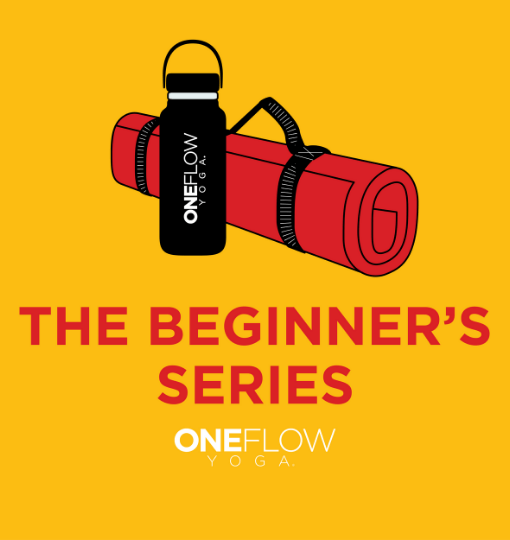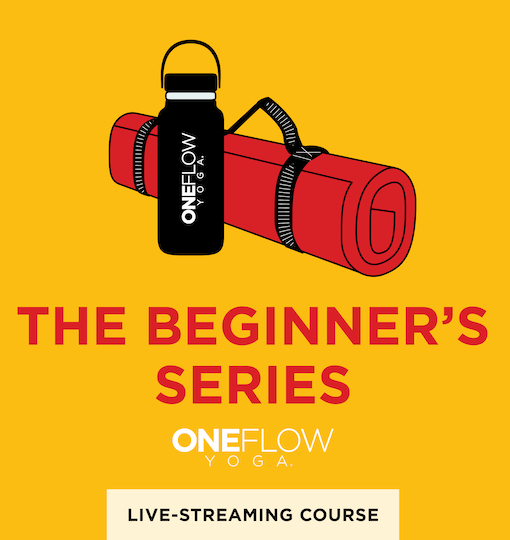When you’re new to yoga, it can seem odd that there are so many yoga poses yet only a couple of basic pieces of equipment–a mat and a yoga block. While it seems intuitive that you stand and do poses on a yoga mat, the question then becomes, what do you do with the yoga block?
Yoga blocks are props, or tools, used to help yoga practitioners in three primary ways: to make yoga poses more accessible, to act as support, and to add a challenge to develop strength.
Consider this as the theory of how to use yoga blocks. Once you understand these concepts, it will free you to know when and how to use a yoga block to enhance and enrich your practice.
Yoga Blocks Are Tools To Help You Practice Yoga
Yoga blocks seem to be the guilty pleasure of the yoga world, though they are often not mentioned in polite company. People have this association that if they use a yoga block, they are somehow cheating.
Or worse still, they feel like they are not a real yogi.
As someone responsible for both on-demand yoga classes and an in-person yoga studio, I can tell you first hand that people are using blocks–lots of blocks. For instance, we have enough at the studio for every person to have two blocks, and often at the start of class, the block shelves are empty.
The same situation exists online. It looks like a party when I teach a live-streamed class because of the different colored blocks in use.
So everyone’s doing it, and no one’s talking about it.
I’m not quite sure how this association came about but let’s set the record straight:
A yoga block is a tool.
That’s right; yoga blocks are pieces of equipment that help you get the job done. Though they are commonly called props, I prefer the word tool because it’s more accurate.
And lots of activities come with their own sets of equipment. If you’re climbing a mountain, you use special climbing ropes. If you’re building a house, you use a hammer instead of your bare hands because ouch. And in cooking, knives are so critical that each chef has her own set she carries with her.
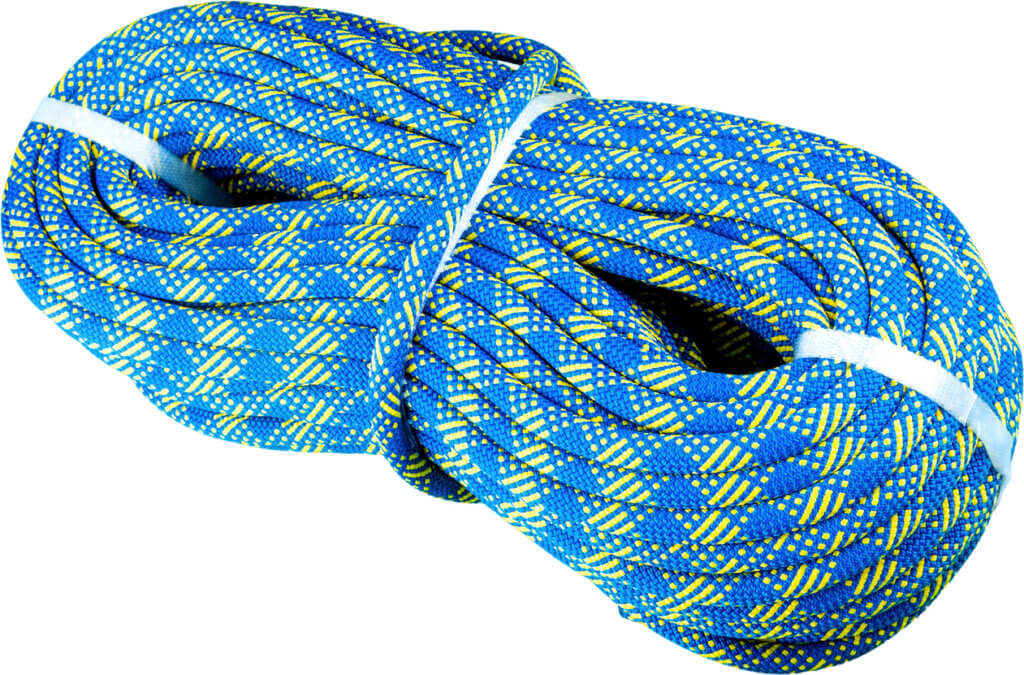
Accessible | Support | Strength
Each activity has specific gear, and yoga is the same.
In certain styles of yoga, ahem, Iyengar, it’s typical to find a prop closet in a studio with straps, blankets, ropes, bolsters, and benches.
In Vinyasa yoga, and for most at-home yoga practices, you only need a mat and a yoga block.
How To Use Yoga Blocks to Make Yoga Poses More Accessible
But why do you need a yoga block in the first place?
Because they are freaking amazing. Yoga blocks allow you to practice yoga poses in a safer, more beneficial way.
All that bending, twisting, and folding you do in yoga poses can be difficult, especially when you are newer. Yoga blocks are essential to doing the postures skillfully.
Yoga Blocks Equal Safety First
Take the simple, but not easy, act of touching your toes. If you didn’t just get off tour with Cirque du Soleil, it can be a challenge to fold yourself in half and reach your fingers to your feet.
The reason you can’t touch your toes easily is often a lack of hip mobility or range of motion. Your hips don’t move much, which is especially true if you usually sit for long periods during the day.
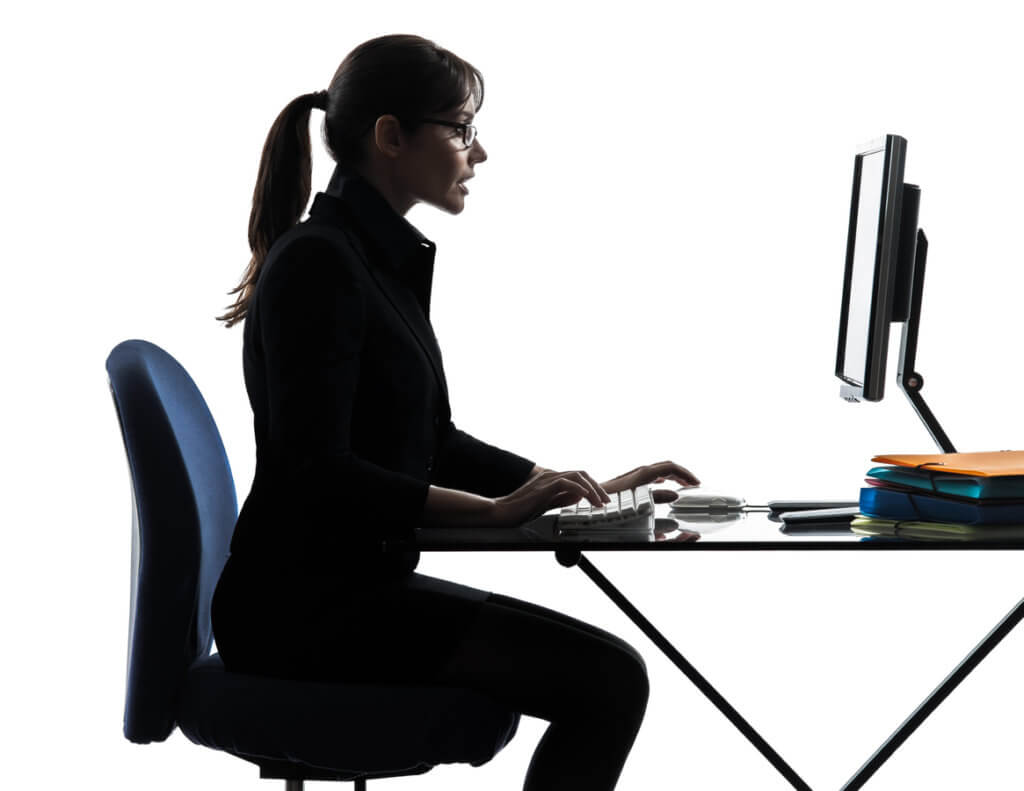
So what do many of us do? We strain, reach, and force ourselves down, which is a terrible idea because of our bodies’ shape, also called anatomy. If your hips don’t move, something else has to and what does is your back.
In the case of folding in half your back rounds, This is a problem because backs, for many people, tend to be weak. In essence, you are putting maximum force on a vulnerable part of the body. As the saying goes, this is a recipe for disaster.
To Prevent Injury, Use a Yoga Block
Instead of that future hospital visit scenario, I described above, what can you do? Use a yoga block. By putting a block on a tall setting on the ground, you’ve raised the floor and made it easier for you to reach down.
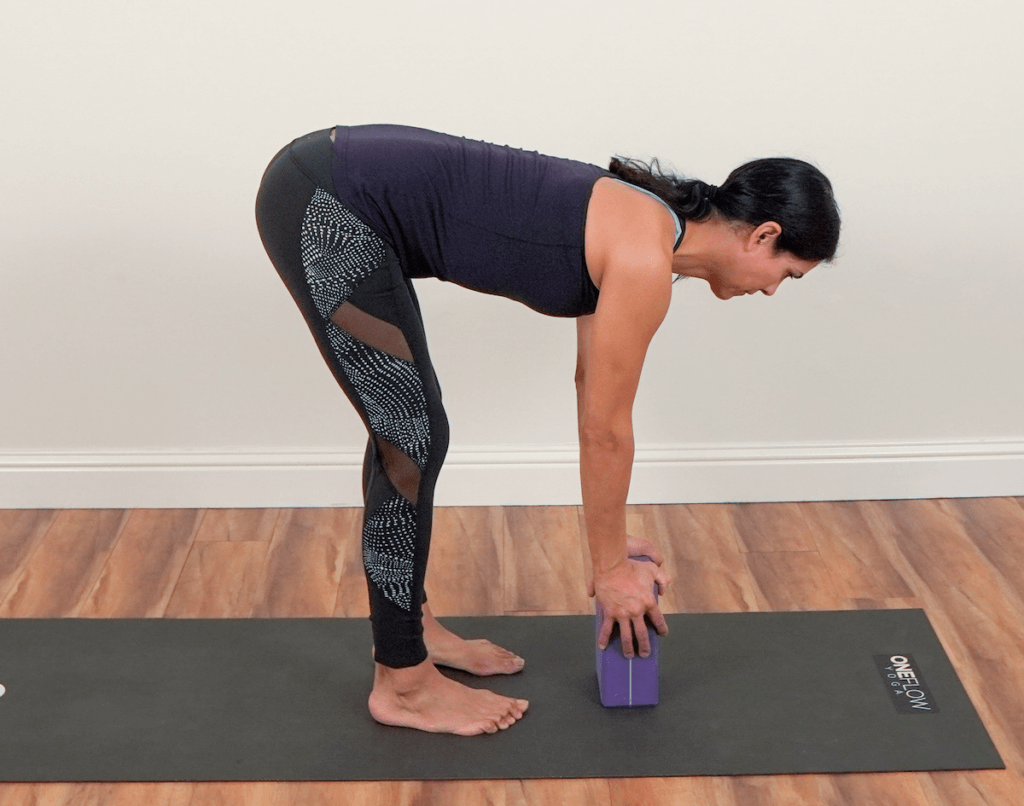
But, you say, I’m still not touching my toes. True, but here’s the beautiful two-for-one deal you are getting. You are helping to prevent injury because you are not forcing yourself down and rounding your back. And, you are now in a better position to do the work of the posture.
Yoga Blocks Help You Do The Work of The Posture
Back to our toe-touching tale, aka forward folds. If a lack of hip mobility is the issue, it makes sense to increase the range of motion in your hips. You’ll never do that by using your back instead of your hips. This is the genius of the yoga block.
By using a block, you can get the fold more from the hips and not the back. Over time, this will increase your range of motion.
There’s much more to it, which we go into in the Beginner’s Series, but the basic idea is if you want to get better at the yoga poses, then you have to actually move what the poses are designed to move. Yoga blocks can help that.
Folding forward is just one example, but whether it’s a twist, backbend, arm balance, or other types of yoga poses, blocks can be used to make each more accessible.
Yoga Blocks Teach You to Engage and Provide Stability
One more way blocks help you do the work of the posture is by giving you something to press against.
Usually, what we are trying to press against is the floor. We’ve already given the example of how yoga blocks can be used to raise the floor. But let’s underscore that you want to not only touch the block but be able to press into it firmly.
This is why you want to choose the right block height for you, low, medium, high, or what I like to call the “skyscraper” setting. If your fingers can barely touch the block on the low setting, for example, it’s better to opt for the medium setting.
By being able to press your hand flat into the block, versus only using your fingertips, you “mechanically advantage” yourself, which is a fancy way of saying you can use the full force of your arm to help your posture.
Again, the dispelled myth of “cheating” affects if we use the correct height. Instead, go big and use the block and the appropriate height for you, in all its glory.
As a bonus, by pressing firmly into the block, you make it a more stable surface and, therefore, safer for you.
Recap: Yoga blocks make yoga poses accessible in two ways:
- They raise the floor so you can get the movement from the appropriate body part.
- They give you something to press against, which provides stability.
How Yoga Blocks Can Act As Support
You can think of yoga blocks acting as the ground, in their role as support. They are there for you to rest your body on and take the pressure off.
This comes back to anatomy and reality.
For instance, a seated posture with your feet together, called baddha konasana, bound angle pose, often leaves your knees high off the ground. This puts pressure on your joints because your legs are not supported, so they act like weights.
But, slip a block under each thigh, and voila, the block is suddenly taking the legs’ weight instead of your joints.
Another posture to look at is child’s pose, balasana, which is often taught like this:
- Start on your hands and your knees.
- Separate your knees to the width of the mat.
- Bring your big toes to touch behind you.
- Place your butt on your feet.
- Rest your head on the mat.
This is great except for two issues. Many people cannot get their butt down behind them, or if they can, they can’t get their forehead down. Instead of being the relaxing pose it was meant to be, child’s pose becomes a head-dangling, knee crunching kind of misery.
What’s the solution? You guessed it, yoga blocks. Place a block between your butt and feet and another below your head. Now you’re chilling out, maxing and relaxing.
Pro-tip, place a towel over the block for your head for extra comfy supportiveness.
As support, yoga blocks act as the ground to raise your body up.
How to Use a Yoga Block for Supported Bridge Pose
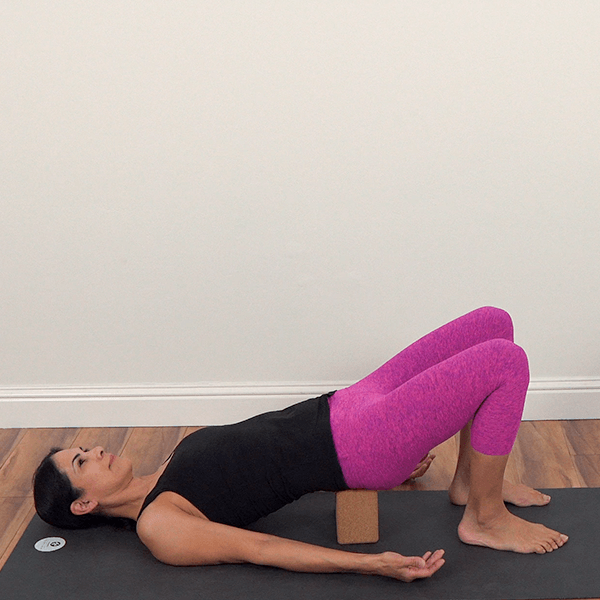
One more classic supported posture is bridge, setu bandha sarvangasana. Here’s how you do it.
- Lie on your back with your yoga block by your side.
- Bend your knees and place your feet on the ground hip-width apart.
- Lift your hips, belly, and heart off the ground.
- Place the block on an appropriate level, either low, medium, or high, below your sacrum.
- Rest your body down on the block and savor.
To come out, press into your feet, lift your hips, slide the block out, then curl down your upper back, middle, back, lower back, and finally, your butt.
The block has your back, or maybe your butt, and helps you get the benefit of the posture, relaxation.
Yoga Blocks as Emotional Support
Besides being there for you physically, blocks support you emotionally. How?
Yoga blocks can take the fear factor out of a posture, specifically crow pose, bakasana. This is probably one of the scariest postures to do when you are just beginning to practice yoga because it’s an arm balance. And unlike other arm balances, if you slip, you fall on your face and die.
Actually, that’s not likely, but try telling that to your brain.
So how do you calm down your nervous system and assure your mind that you’ll still be your radiant self after yoga–use a block. Place it on the ground, 6-8 inches in front of you, on the low or medium setting. Now, if you should tumble forward, you have your own personal crash pad waiting for you.
How To Add Challenge & Develop Strength with Yoga Blocks
Many yogins who have practiced for years do not use blocks. That’s a missed opportunity because blocks can amp up the challenge of any yoga practice. In response, your body will work harder and thus get stronger.
To build strength, we rely primarily on the exercise science principles of adaptation and progressive overload.
Adaptation states that as you do a yoga posture, your body gets stronger over time and adapts to it. You are in maintenance mode from that point forward, but your body will not get any stronger from that particular pose.
What now? You need the principle of progressive overload, which says that you have to keep applying an appropriate next level challenge to strengthen your body.
In this case, the challenge comes in an innocent-looking 4” x 9” x 6” compact size. Yes, of course, it’s a yoga block.
We’re going to quickly list how you can use yoga blocks to spice up your practice.
Use Yoga Blocks to Add Weight and Tension
While blocks may seem lightweight (high-quality foam blocks weigh .8 lbs/.36kg and cork blocks are double, or 1.65 lbs/.75kg), they get heavy in a hurry when you add them to your yoga poses.
Want to make the blocks feel heavier? Hold them further from you. Because of gravity acting on the block, the force needed by your body to hold it further away is greater. In turn, it takes more effort to generate this force, and your body responds by getting stronger.
You can think of tension as creating resistance. In yoga, we use a lot of push/pull resistance to stabilize movements. You can increase that resistance, specifically, the isometric contraction required, by adding another variable to resistance against. (i.e., a yoga block.)
Unlike your arms and legs, your yoga block works without fatigue to provide a consistent force. I think we sometimes even see our blocks smile as if they are enjoying our striving.
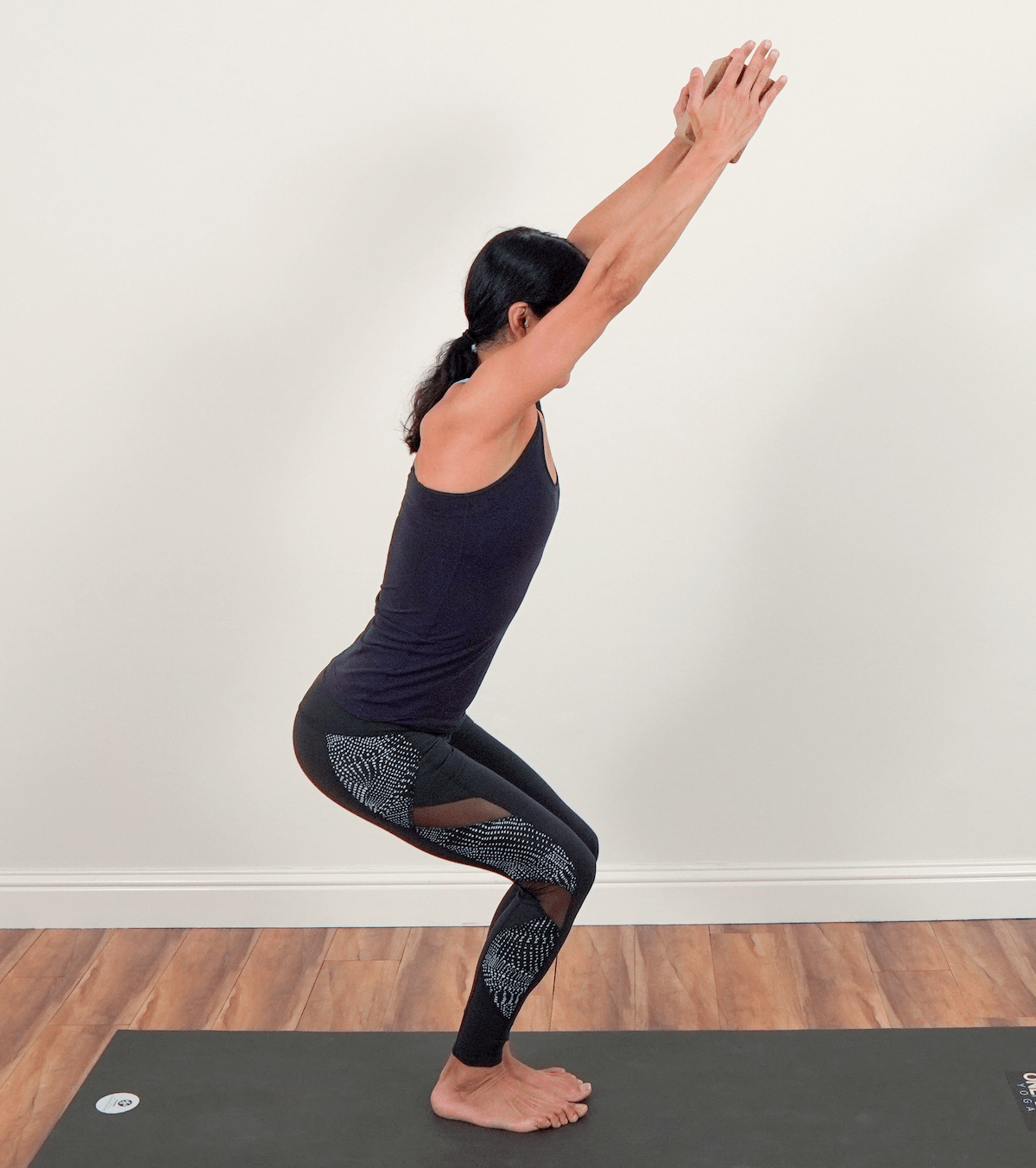
An example of a pose with the yoga block as weight and tension is utkatasana, fierce pose.
- Place the block wide-style between your flat palms.
- With the block between your hands, straighten your arms out in front of you.
- Keep your arms straight and lift your arms as you bend your knees for the final form.
Because you are using flat palms instead of your fingers to hold the block, it will take more physical effort to generate tension to prevent the block from falling. And by extending your arms, you increase the force necessary to hold the blocks.
Want even more? Use two blocks on the narrow setting and press them together. You get both added weight and added tension. I love to use cork blocks just for this purpose.
Yoga Blocks Create Asymmetry
Asymmetry, where the two sides of your body are doing different things, is a classic way to introduce progressive overload.
Think of plank as symmetrical. Bend your elbows to a low plank, chaturanga type, posture, and it’s still symmetrical. However, it’s more difficult because your muscles are having to work harder because of the angle.
Add more asymmetry by placing a block, low setting underneath one of your hands. You’ll feel one of your shoulders working noticeably harder. Want more? Lift the opposite leg of the hand on the block.
Yoga Blocks Add Length and Height
Let’s revisit the forward fold. It doesn’t take a full range of motion to get your hands to the ground. To continue to do work, Iyengar advises us to move our hands behind us.
But that changes the angle. Instead, you can raise the floor by standing on the low level block, which gives you another 4 inches to reach down.
The same concept applies in a seated forward fold, paschimottanasana. By putting a block in front of your feet, you’ve added more work and thus more effort is necessary. The effect is one where you are lengthening your legs or adding onto your feet; however, you want to look at it.
Another great way to use weight is to put your front foot on a block in a low lunge. This adds to the hip extension feel of the leg that is behind you.
Using a block to add height, i.e., raising the ground strategically, allows you to change the pose’s angle and thereby what is having to work. To see this in action, just do chaturanga, but with your feet on blocks. Four limb staff posture’s got a brand new bag.
Yoga Blocks Shrink the Ground
Tree pose, vrksasana, is challenging to do well. But now stand on a block and do tree, or dancer, natarajasana, or any other standing balance posture, and it’s a new experience. It’s like the pole-sitting craze of the 1920s.
Yoga Blocks Help You Do The Work of the Posture Part 2
When we are new to yoga, the challenge is often having enough mobility and range of motion to take up the invitation of the posture.
Indeed, yoga is often thought about as a flexibility practice. In reality, yoga has always been about inner and outer strength.
You see this transition as your practice progresses. You go from barely being able to touch the floor to placing your hands down flat.
As I mentioned above, once you get into the posture’s basic shape, you are in maintenance mode. You can change this by adding refinements and nuance to the practice or by using a yoga block.
At this stage of development, it’s not about increasing intensity by doing something different. An example of this would be you doing chaturanga while everyone else is doing plank. Yes, that ramps up the difficulty, but it’s a different posture.
To practice skillfully, you want to do what everyone else is doing; you just want to do it differently.

To illustrate, think about extended triangle, utthita trikonasana. You can get the basic shape of the legs wide apart, one hand down, one hand up, and your torso facing the side. To do it differently, we need to turn on more of the musculature, and we do that by getting a sense of the feeling of engagement.
If we zoom into the front leg in triangle, the kneecap is lifting because the quadriceps are engaging. How do you get the entire leg to engage, particularly the back of the front leg?
Try putting a block, low setting and long, under the ball of your front foot. Come back into triangle pose like this, and you’ll notice your leg working differently. The yoga block is teaching you the sensation of engagement.
Now remove the block and try to find that same sensation in the front leg.
Opportunities abound to use this tactic to get a sense of the sensation and the work of the posture by creatively using yoga blocks.
Which Type Of Yoga Block Should You Choose?
If I were to buy only one set of blocks, which is two, then I would choose premium foam blocks.
You do want two blocks because you want to place both hands or feet on blocks. Using one block introduces odd imbalances and angles that are not helpful, particularly to newer students.
You want a premium yoga block because there is a significant quality difference between many cheap foam blocks you see in big box stores and a yoga block you will be happy with. And more than likely, you’re only ever going to need to buy one set of yoga blocks.
How do you tell a cheap block? Cheap blocks are squishy, which means they tend not to be great support, do not provide much resistance, and are too light to add significant challenge.
Cheap blocks fail all three uses of accessibility, support, and strength.
A premium yoga foam block is dense yet soft. It excels at giving support because it’s strong yet giving. And they are stable, so you’ll trust that you can stand on them or use them for cultivating strength. They are the best of both worlds.
If challenge was my main goal, I would choose cork blocks, which are heavier than foam blocks.
Yoga Block Buying Recommendations
First, we always believe in supporting your local yoga studio by buying there. REI is another excellent place to purchase yoga blocks and equipment.
The all-rounder.
The premium foam block we recommend is the hugger mugger 4 in. foam block.
I have purchased over 100 of these for our studio, and students love them.
It’s a standard size, 4” x 9” x 6” and works well for an average size person.
Remember you want to get two blocks of the same kind.
If you have a smaller frame, consider the hugger mugger 3 in foam block.
Larger frame individuals or people who like a little extra height to their blocks choose the hugger mugger 5 in. block blue foam yoga block.
For cork blocks, I recommend both the manduka cork yoga block or the hugger mugger. I like how the manduka feels over the hugger mugger cork block, but either one will do right by you. Manduka also has a narrower version of cork block available.
Finally, if you want a block purely for support, you will want the unblock by manduka. It has a shaped side and top, which contours more to your body shape. This is more comfortable for your wrists and back.
What Can You Substitute For a Yoga Block
Are there good yoga block alternatives?
In a pinch, you can use the following for yoga block substitutes.
For accessibility and strength
- Two 28oz cans of tomatoes
- Two dumbbells size 10 lb-15 lb.
- Two think books duct-taped together
- The front side of a chair
For support
- A folded bath towel, blanket, cushion, or pillow
Clearly, none of these is ideal because they are cumbersome, heavy, and oddly shaped. But substitutes will be better than nothing.
However, once you decide yoga is for, whether you practice at home on in-studio, it’s worth getting a good set of yoga blocks.

